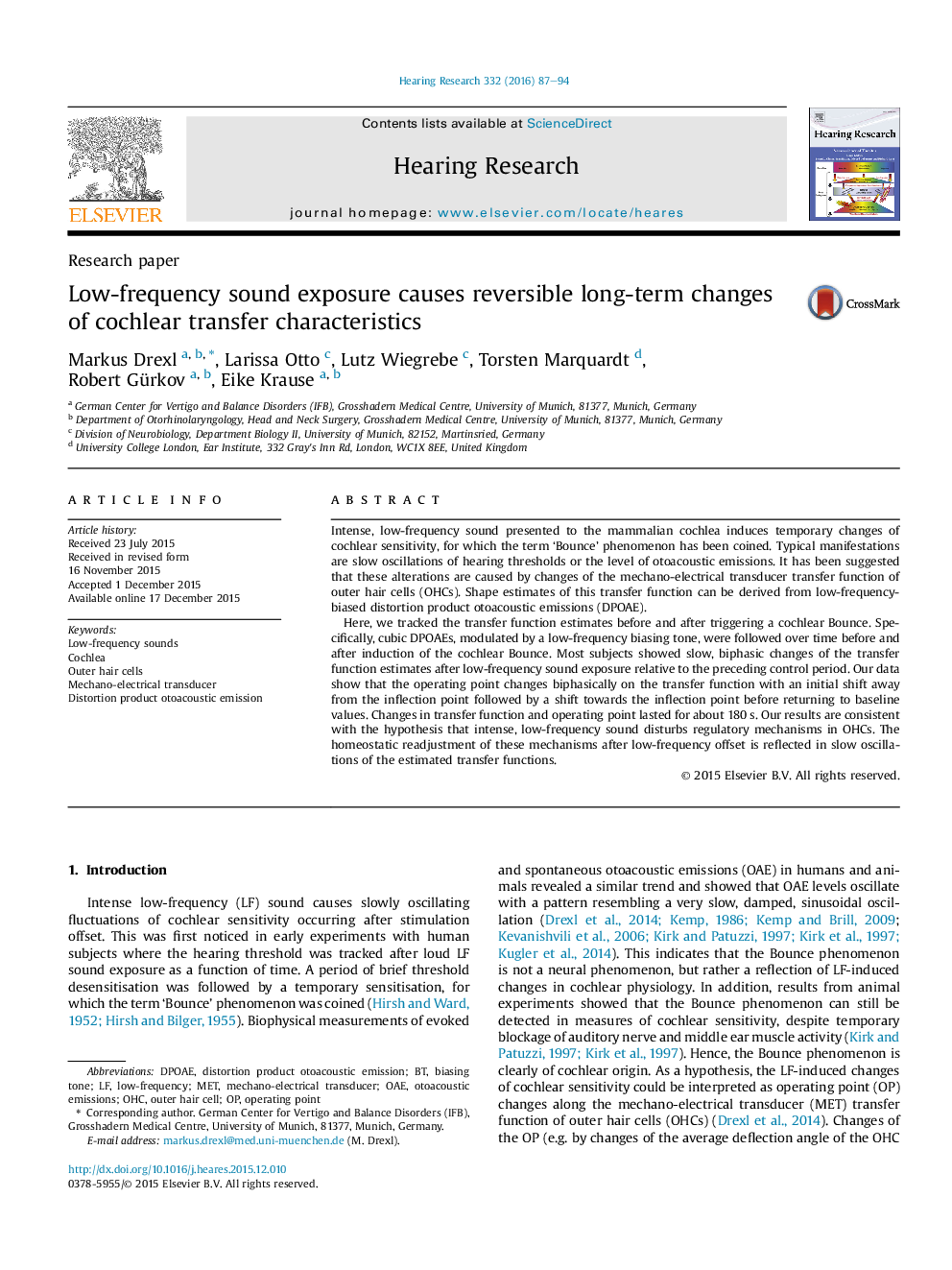| کد مقاله | کد نشریه | سال انتشار | مقاله انگلیسی | نسخه تمام متن |
|---|---|---|---|---|
| 6287144 | 1615568 | 2016 | 8 صفحه PDF | دانلود رایگان |
- Auditory parameters of the human inner ear undergo slow, oscillatory changes following exposure to low-frequency sound.
- Low-frequency biased DPOAEs were used to estimate mechano-electrical transfer function during the Bounce phenomenon.
- Slow, oscillatory shape changes of the mechano-electrical transfer function can be seen during the Bounce phenomenon.
- The Bounce phenomenon provides insight into processing of low-frequency sounds by the mammalian inner ear.
Intense, low-frequency sound presented to the mammalian cochlea induces temporary changes of cochlear sensitivity, for which the term 'Bounce' phenomenon has been coined. Typical manifestations are slow oscillations of hearing thresholds or the level of otoacoustic emissions. It has been suggested that these alterations are caused by changes of the mechano-electrical transducer transfer function of outer hair cells (OHCs). Shape estimates of this transfer function can be derived from low-frequency-biased distortion product otoacoustic emissions (DPOAE).Here, we tracked the transfer function estimates before and after triggering a cochlear Bounce. Specifically, cubic DPOAEs, modulated by a low-frequency biasing tone, were followed over time before and after induction of the cochlear Bounce. Most subjects showed slow, biphasic changes of the transfer function estimates after low-frequency sound exposure relative to the preceding control period. Our data show that the operating point changes biphasically on the transfer function with an initial shift away from the inflection point followed by a shift towards the inflection point before returning to baseline values. Changes in transfer function and operating point lasted for about 180Â s. Our results are consistent with the hypothesis that intense, low-frequency sound disturbs regulatory mechanisms in OHCs. The homeostatic readjustment of these mechanisms after low-frequency offset is reflected in slow oscillations of the estimated transfer functions.
Journal: Hearing Research - Volume 332, February 2016, Pages 87-94
